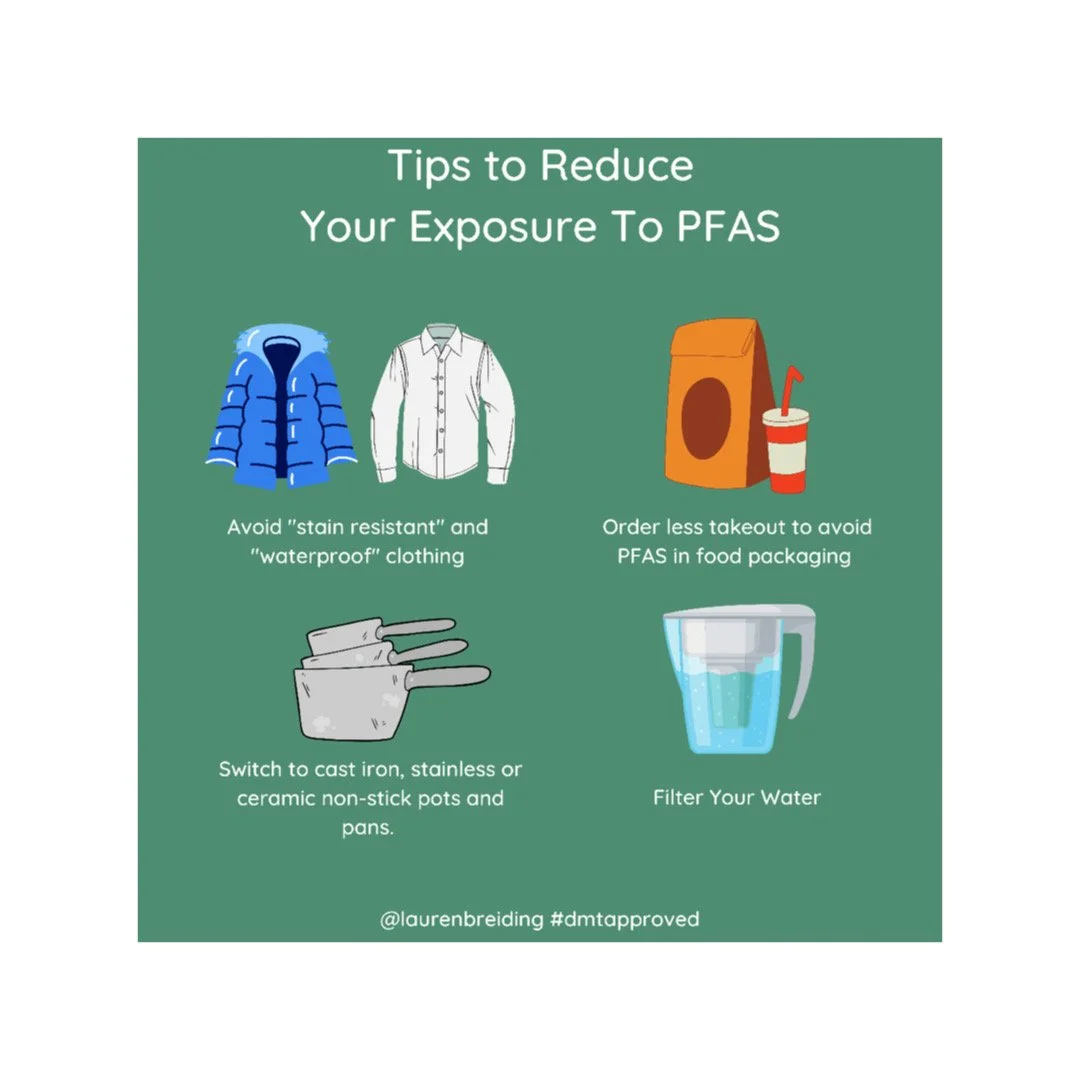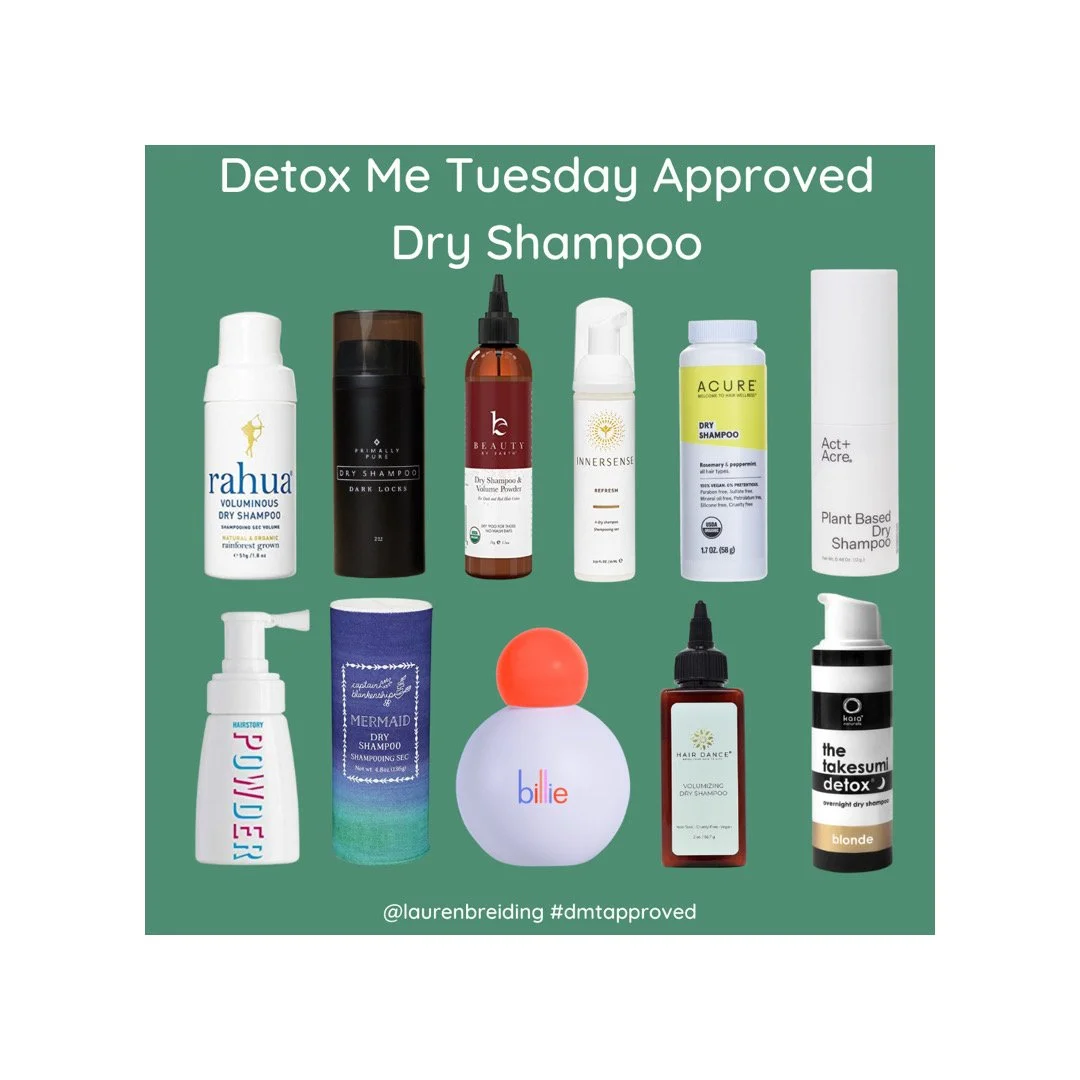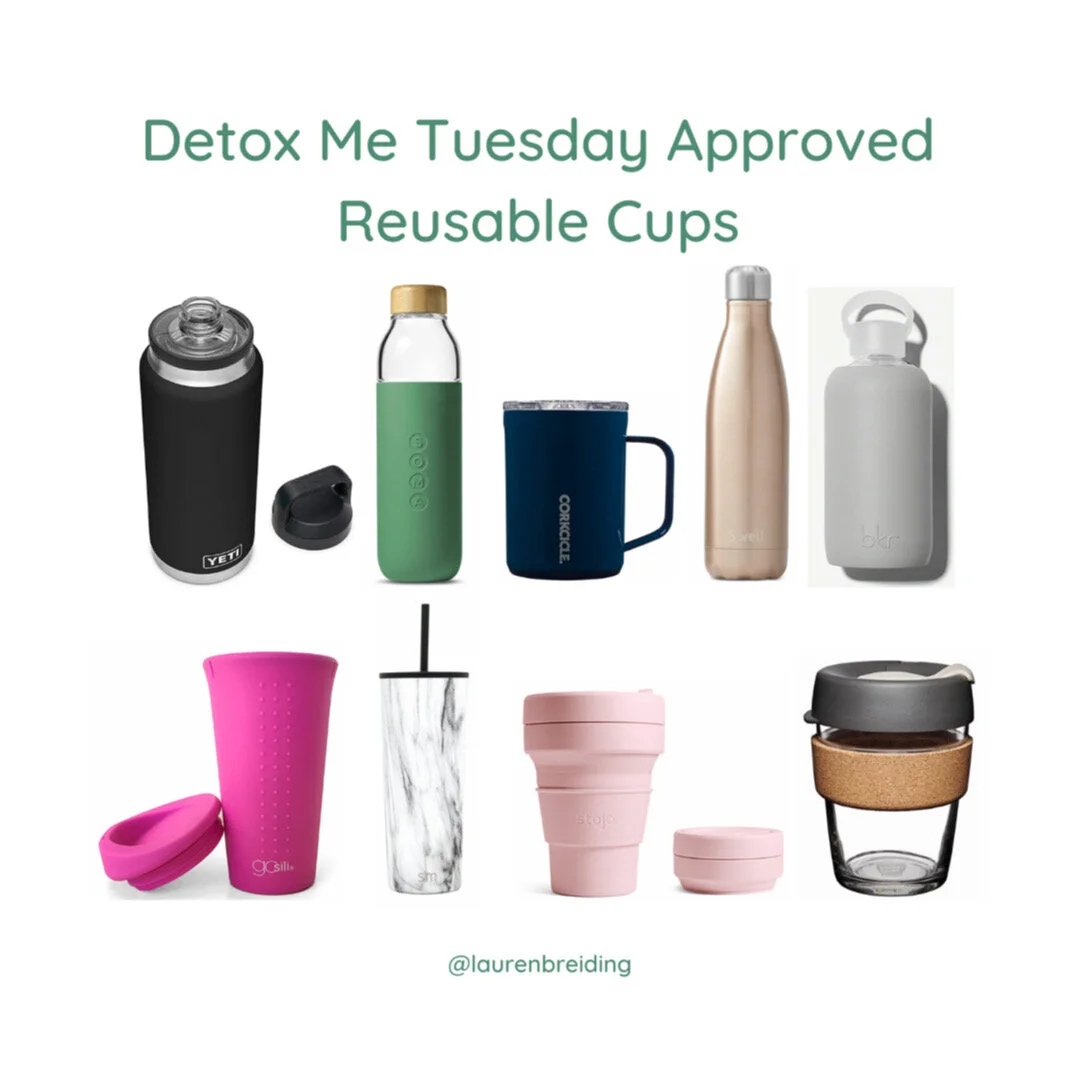Four Ways to Reduce Your Exposure to "Forever Chemical" PFAS
Another class of chemicals that is all over the news right now is PFAS or Per- and Polyfluoroalkyl Substances. These are manmade substances that came onto the market around the 1940s. While there are thousands of PFAS, they are most commonly used for their non-stick, waterproof and stain resistant properties. The important thing to know about PFAS is that they do not go away, which gives them the name “forever chemicals.” PFAS accumulate in humans and do not degrade in the earth. They can be found in air, soil water, food and product packaging, household products (think furniture and carpets) and personal care items.
The most common ones you have probably heard of are PFOA (Teflon made by 3M and Dupont for non-stick pans) and PFOS. While many things say “PFOA free,” know that they might have been replaced with other PFAS.
PFAS have been linked to birth defects, reproductive defects, high blood pressure, increased risk of cancers, decreased immune function, developmental delays, ulcerative colitis and hormone disruption.
Four Ways To Reduce Your Exposure to PFAS:
Avoid “stain resistant” and “waterproof” clothing.
Order less takeout to avoid PFAS in food packaging.
Switch to cast iron, stainless steel or ceramic non-stick pots and pans. Or, lower the heat when using traditional non-stick pots and pans.
Filter your water. If you want to learn more about your specific water and what it may be contaminated with go HERE. I personally have this Reverse Osmosis System. (Use code LAURENBREIDING for 10% off)
Bonus! Long lasting or Waterproof makeup formulas often contain PFAS. Check out this awesome study done by Mamavation. Towards the bottom you can find different brands with non-detect levels!
The EPA Announced a PFAS Strategic Roadmap to Address these Chemicals.
This is a huge first step and will hopefully lead to more solutions. If you want to use your voice and tell your local leaders to ban PFAS from cosmetics text BANPFAS to 52886 and take 10 seconds to fill in your personal information.
References and Resources:






